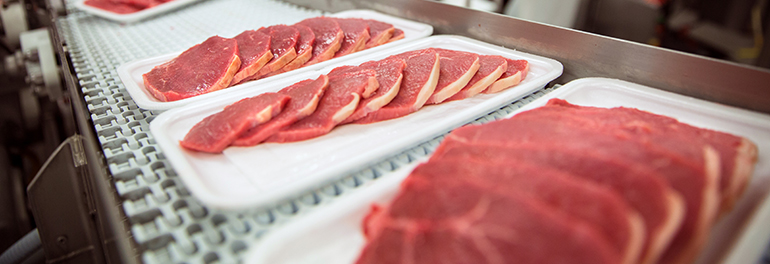According to the CDC, “More than 200 known diseases are transmitted through food. The causes of foodborne illness include viruses, bacteria, parasites, toxins, metals, and prions, and the symptoms of foodborne illness range from mild gastroenteritis to life-threatening neurologic, hepatic, and renal syndromes. In the United States, foodborne diseases have been estimated to cause 6 million to 81 million illnesses and up to 9,000 deaths each year. However, ongoing changes in the food supply, the identification of new foodborne diseases, and the availability of new surveillance data have made these figures obsolete.”
Campylobacter, Salmonella, and E. coli, and the Norwalk viruses cause the most commonly recognized foodborne infections.
According to the CDC, “Campylobacter is a bacterial pathogen that causes fever, diarrhea, and abdominal cramps. It is the most commonly identified bacterial cause of diarrheal illness in the world. These bacteria live in the intestines of healthy birds, and most raw poultry meat has Campylobacter on it. Eating undercooked chicken, or other food that has been contaminated with juices dripping from raw chicken is the most frequent source of this infection.”
“Salmonella is also a bacterium that is widespread in the intestines of birds, reptiles and mammals. It can spread to humans via a variety of different foods of animal origin. The illness it causes, salmonellosis, typically includes fever, diarrhea and abdominal cramps. In persons with poor underlying health or weakened immune systems, it can invade the bloodstream and cause life-threatening infections.”
“E. coli O157:H7 is a bacterial pathogen that has a reservoir in cattle and other similar animals. Human illness typically follows consumption of food or water that has been contaminated with microscopic amounts of cow feces. The illness it causes is often a severe and bloody diarrhea and painful abdominal cramps, without much fever. In 3% to 5% of cases, a complication called hemolytic uremic syndrome (HUS) can occur several weeks after the initial symptoms. This severe complication includes temporary anemia, profuse bleeding, and kidney failure.”
“Calicivirus, or Norwalk-like virus is an extremely common cause of foodborne illness, though it is rarely diagnosed, because the laboratory test is not widely available. It causes an acute gastrointestinal illness, usually with more vomiting than diarrhea, that resolves within two days. Unlike many foodborne pathogens that have animal reservoirs, it is believed that Norwalk-like viruses spread primarily from one infected person to another. Infected kitchen workers can contaminate a salad or sandwich as they prepare it, if they have the virus on their hands. Infected fishermen have contaminated oysters as they harvested them.”
“Some common diseases are occasionally foodborne, even though they are usually transmitted by other routes. These include infections caused by Shigella, hepatitis A, and the parasites Giardia lamblia and Cryptosporidia. Even strep throats have been transmitted occasionally through food.”
“In addition to disease caused by direct infection, some foodborne diseases are caused by the presence of a toxin in the food that was produced by a microbe in the food. For example, the bacterium Staphylococcus aureus can grow in some foods and produce a toxin that causes intense vomiting. The rare but deadly disease botulism occurs when the bacterium Clostridium botulinum grows and produces a powerful paralytic toxin in foods. These toxins can produce illness even if the microbes that produced them are no longer there.”
“Other toxins and poisonous chemicals can cause foodborne illness. People can become ill if a pesticide is inadvertently added to a food, or if naturally poisonous substances are used to prepare a meal. Every year, people become ill after mistaking poisonous mushrooms for safe species, or after eating poisonous reef fishes.”


0 Comments